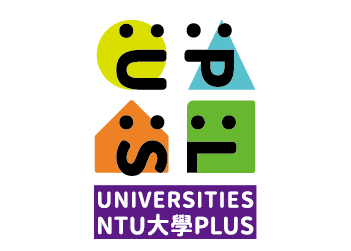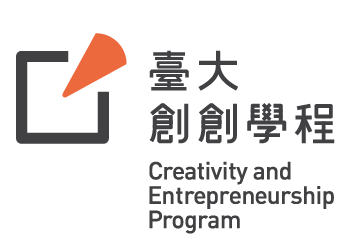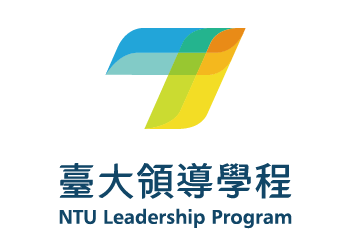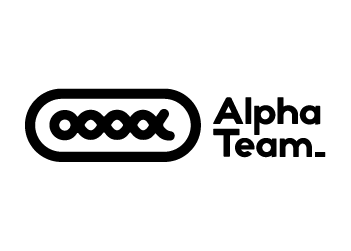
| 演講資訊 |
時間:2024/11/06(三)~2024/11/07(四)
地點:臺大水源校區卓越研究大樓5樓 505教室
| 演講時間 | 講者 | 講題 | |
|
2024/11/6(三)
|
10:00~11:00 | 李宗興 老師 | 具身性創造力與創新: 遷徙、科技、物質與教學法 |
| 11:50~12:50 | 蔡文傑 老師 | 以設計探未來:推動科技與人文共生的互動實踐 | |
| 13:30~14:30 | 邱仁一 老師 | 創新教育的發展與實踐:教學科技的有效性與個別化 | |
| 15:20~16:20 | 黃郁芬 老師 | 音樂AI:跨領域視角與創新應用 | |
| 2024/11/7(四) | 10:00~11:00 | 彼勇.依斯瑪哈單 老師
Biung Ismahasan |
Curating Indigenous Relational Space and Performance Towards Collaborative Construction of Interdisciplinary Arts in Education Through AI-integrated EMI |
本系列演講毋須報名,歡迎所有師生參加
Members of the university community and interested friends are welcome to attend. No registration is needed.
具身性創造力與創新: 遷徙、科技、物質與教學法
內容介紹:
具身性概念打破笛卡爾式身心二元論,關注屬於身體的知覺、運動、情感甚至生理解構等面相,如何形塑了人對於世界的理解,強調思考不僅是心智層面的運作,更是身體與環境互動的內在動態聯繫,也是「動作中的思考」。具身性概念為心智哲學、人文研究、心理學、認知科學乃至人工智慧與機器人學,打開了新的研究方向。我將從具身性概念出發,介紹它如何幫助人們重新思考創造力與創新的定義與可能。為進一步說明身體如何形塑了創造力與創新的開展,我將以自身過往參與和正在進行的研究、實踐與教學為例,討論跨國遷徙與跨越虛實的身體經驗如何影響藝術創造力與創新,更可能進一步轉化人思考自身與環境的關係;物質的可供性 (affordance) 如何形塑了「現代的」身體技巧與美學;以及我如何以具身的表演教學法,引領參與者重新理解創造力,也重新理解自身過往的生命經驗與身分認同。
以設計探未來:推動科技與人文共生的互動實踐
內容介紹:
本次演講將說明我如何以互動設計的「透過設計做研究」(Research through Design, RtD)認識論與方法論,促進科技創新與人文關懷的融合,並推動人機共生的未來構想。我應用大語言模型(LLMs)與物聯網(IoT)等當代科技素材,探討如何通過設計實驗啟發新知識、激發反思,並拓展跨領域合作的可能性。近期研究包括「Soundscape Fiction」、「PhenoProbe」及「IoXFun Speculative Kit」,這些實踐透過多感官的互動體驗深化設計的反思性與推測性。「Soundscape Fiction」以沉浸式聲景引導使用者探索未來場景,並省思科技在日常生活中的角色;「PhenoProbe」則透過文化元素促進長者參與氣候變遷的討論,展現設計在促進社會對話中的潛力。「IoXFun Speculative Kit」聚焦於IoT技術與設計思維的整合,與在地自造者社群合作,將複雜學術科技轉化為具體的虛構物件,使參與者能批判性地思考科技應用的社會影響。於近未來,我計畫在台大創新設計學院擴展這些研究實踐與課程,推動以人文關懷為核心(humanity-centered)的跨科際合作,並進一步實驗非以人為中心(more-than-human)的可能設計,期盼透過設計促進另類的跨域學習互動與豐富的研究社群發展。
創新教育的發展與實踐:教學科技的有效性與個別化
內容介紹:
本次演講旨在探討教育科技於創新教育中的有效性,並透過四篇研究結果提供理論與實證依據。首先,以後設分析為基礎,系統性評估不同教育科技在教學中的應用成效,並分析可能的潛在調節變項。
接著,探討創新技術應用於教育的機遇與挑戰。AI的發展對教育領域產生了深遠影響,然而在特定領域中,AI所能協助的範疇仍相當有限。因此,融入創新技術於教育的過程中應以教學理論與策略作為設計的核心依據,將創新技術視為支持教學的方法。為此,提出了一種以機器學習演算法作為預測學生數學學習成就的系統架構,同時提出兩種個別化回饋策略:動態個別化回饋(DPF)與自主選擇個別化回饋(SSPF)。著重於比較在上述系統架構下,兩種回饋策略在國小學生數學學習成就、認知負荷、回饋感受及錯誤概念修正方面的差異,旨在提供更為有效的教學策略,解決數學教育中常見的學習困難。
最後,展望未來研究方向,在教學策略中進一步結合教育科技,並探討其在多元學習場景中的適應性與可行性,期望為學生提供更具成效與適性的學習經驗,推動教育創新與跨領域實踐。
音樂AI:跨領域視角與創新應用
內容介紹:
人工智慧(AI)技術近年來已迅速融入我們的生活,從手機語音助理Siri到ChatGPT等生成模型,AI不僅改變了我們的日常互動,也深刻影響各領域的發展。在音樂領域,AI展現出從音樂生成到分析的強大潛力,為音樂理論、音樂創作以及文化理解帶來新契機。這場演講將聚焦於音樂AI的發展、學術價值、產業應用及未來潛力,首先,介紹音樂AI的基本概念及發展脈絡,並討論音樂AI與其他種類AI的異同。接著,深入分析音樂AI在學術與產業中的應用,包括音樂生成、音樂分析、音樂編輯、音樂串流與多媒體應用等現況。最後,展望音樂AI的未來走向,著重於跨模態(cross-modal)研究,即整合文字、聲音、圖片等資料,透過數據驅動(data-driven)的方法,建立跨學科的分析框架,將人文藝術(如音樂學、音樂分析)、社會科學(如音樂心理學)與資訊科學(如AI模型技術)的相關議題互相聯繫,擴展音樂AI在學術研究與文化產業中的應用。
Curating Indigenous Relational Space and Performance Towards Collaborative Construction of Interdisciplinary Arts in Education Through AI-integrated EMI
內容介紹:
Bunun tu dadangian (Indigenous relational space in Bunun language of Indigenous Taiwanese, meaning the place, location, site of cultural ceremony or the spirituality of space in the community) has contributed to the establishment of trans-Indigenous relational art by offering what Native American (Chickasaw Nation) scholar Chadwick Allen contextualizes as ‘Indigenous relational art in the broader field of tans-Indigenous cultural practice’ that assert[s] ‘centering the Indigenous [to] become a new standard’ (2012: 12, 18). Visualizing sovereignty in an Indigenous sense is similarly connected to land/dalah. In Bunun context, the phrase maluskun mas dalah (return to the land) can be defined as absolute sovereignty. The concept of ‘Indigenous criticism of Indigenous art’ refers to the practice of critically analyzing and interpreting Indigenous art from within the Indigenous community, which is crucial for understanding and preserving the cultural significance of the art. It begins with the knowledge that I am part of a community. Initiating my teaching experience, a large part of the learning outcomes aspired to cultivate the inclusion of arts learning in classroom management and naturalize the idea of creating a culturally resonant space where I, as an artist-teacher, and students have been partnering with the artists and/or cultural institutions to incorporate the arts into the art-expanded curriculum.
This talk will explore the concepts of Indigenous relational space, performance, and performative Indigeneity towards the collaborative construction of interdisciplinary arts in education through the AI-integrated EMI course design. This practice-based research begins with the overarching question: How does an Indigenous curator-cum-educator articulate the relational space, performance, and its curatorial approach used to negotiate a trans-cultural and trans-contextual dialogue of performative power and knowledge linked to specific counter-narratives of Indigenous curatorial practice, pedagogic praxis and art education in Taiwan and beyond? This talk is divided into three parts. First, I will elaborate on two distinctive Indigenous relational practices – Rukai Nation sculptor Eleng Luluan’s installation art and my own performative curatorial practice as a Bunun Nation curator working at an Indigenous public cemetery. Secondly, I will demonstrate how the relational practices of Indigenous performance were activated across the event of Performative Encounter(s) in my curation entitled Dispossessions: Performative Encounter(s) of Taiwanese Indigenous Contemporary Art (Goldsmiths, 2018) by reviewing the Northern Sápmi (Norway) artist Marita Isobel Solberg’s Chemical Chords. Finally, I will assemble the production of exhibition-making in relation to performative art (merged with the flexibility of huge immersive installations and the effect of spatial-locomotive-sensory activities) through two EMI modules, Practical Skills for Curatorial Work and Art Practice and Spaces of Practice for Arts & Learning. This research outcome fosters insightful critical engagement, collaborative creation, and positioning as transformative agents towards participatory learning engagement on Indigenous works of art within community-based concepts. It internally transforms the institution’s interpretive banalities and hegemonic discourses.





